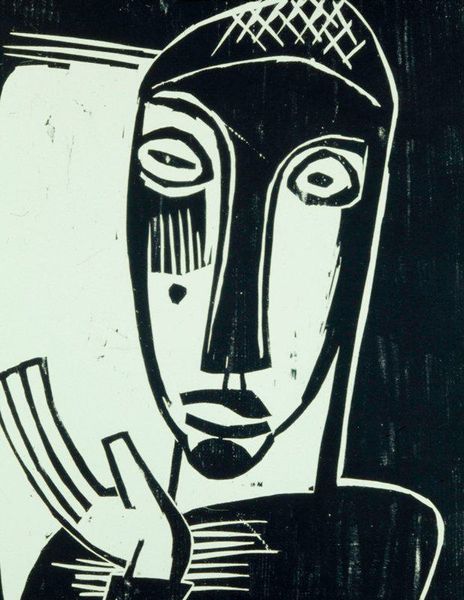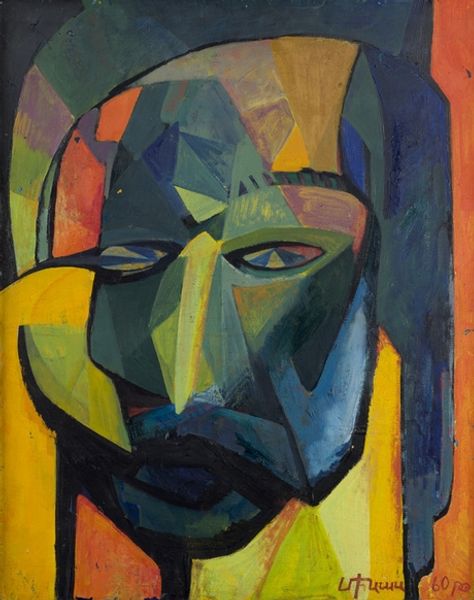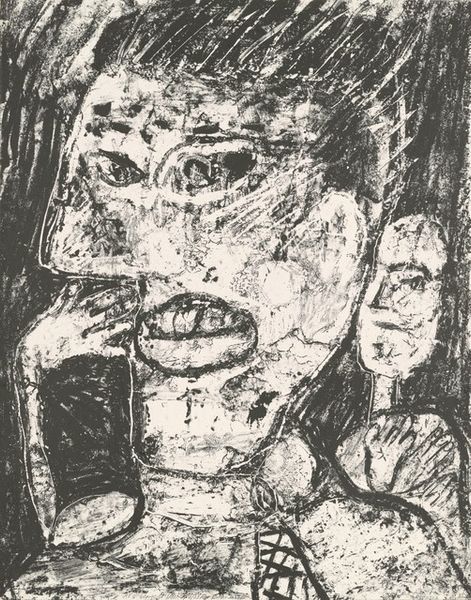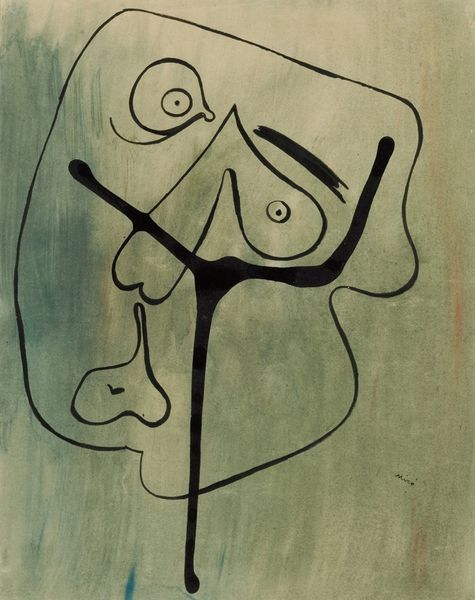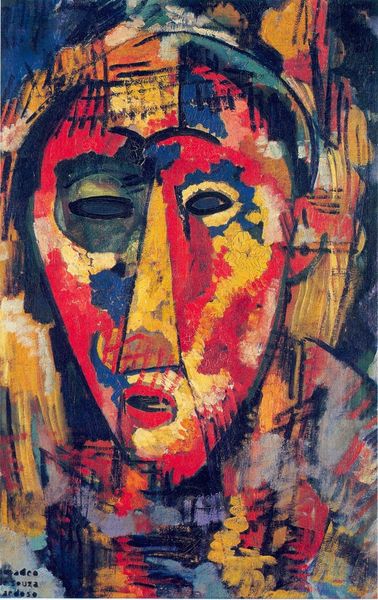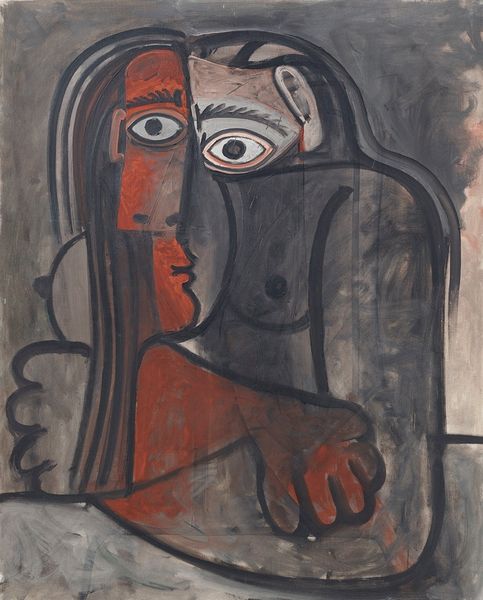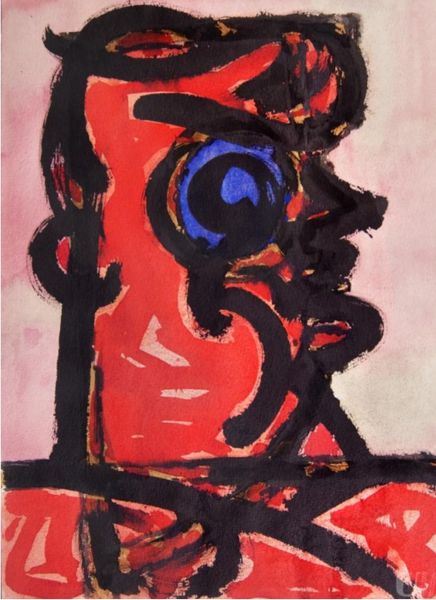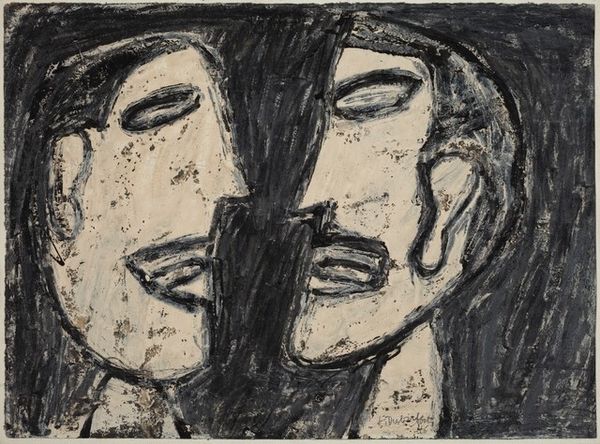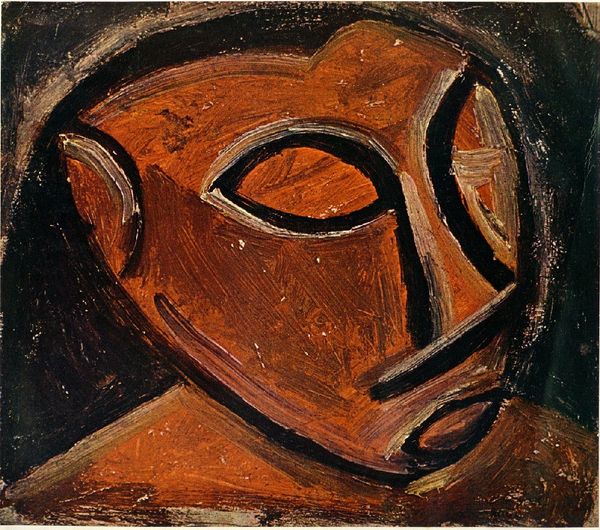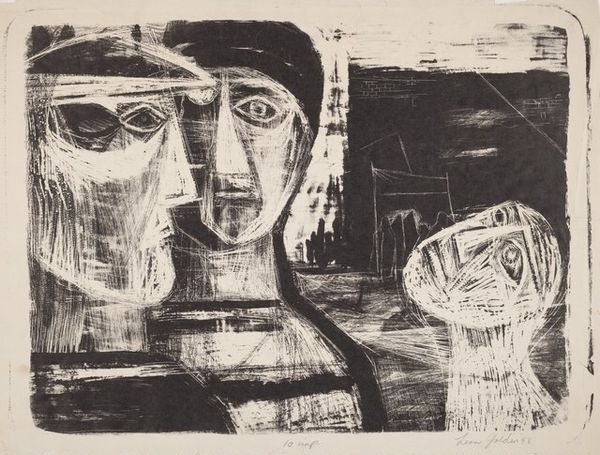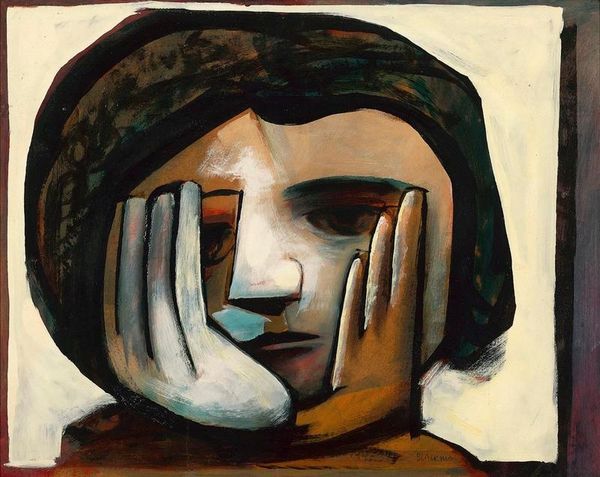
Copyright: Modern Artists: Artvee
Curator: This is Pablo Picasso’s "Buste d’homme écrivant," or "Bust of a Man Writing," painted in 1971. It’s rendered in acrylic paint on canvas. Editor: Immediately striking! The palette is surprisingly subdued, almost monochromatic, yet the intensity of that single, wide eye…it's unsettling. And the aggressive brushstrokes seem to capture an almost manic energy. Curator: Painted late in Picasso’s career, the artwork fits within a broader context of his re-engagement with historical masters. Picasso spent his career confronting art history by representing archetypes like "the painter" or "the musketeer" within the socio-political frame of 20th-century art, engaging his personal legacy and myth. Editor: I'm intrigued by the way Picasso deconstructs the form. The subject is both there and not there, recognizable as a man writing, but fractured, fragmented, as only Cubism could achieve. How do you see the relationship of figure and space in this work? The palette reinforces it, blurring their boundaries... Curator: Precisely! Here, space is almost inseparable from the subject. In 1971, Picasso was acutely aware of his influence, perhaps questioning it. The act of "writing," a foundation of civilization, reflects Picasso evaluating his lasting social legacy. Editor: Yes! Look closely at the materiality – that surface quality. You can practically feel the speed and the weight of the hand that made each brushstroke, the almost raw immediacy... Notice also, the subtle contrasts between the muted greys, greens, and off-whites—an entirely self-contained world of hues! Curator: Moreover, this "writer" emerges during an era dominated by movements contesting authorship and artistic hierarchies. Thus, "Bust of a Man Writing" reveals a fascinating commentary on these shifts. Picasso seems to re-evaluate what it means to produce art, write, and remain influential in a changing art world. Editor: For me, the painting resides within its visual construction—a masterfully compressed vision, that the form perfectly serves content. Curator: Agreed; viewing “Bust of a Man Writing" via this perspective really changes my perceptions! Editor: And mine—revealing new dimensions in the way we see late-Picasso.
Comments
No comments
Be the first to comment and join the conversation on the ultimate creative platform.
